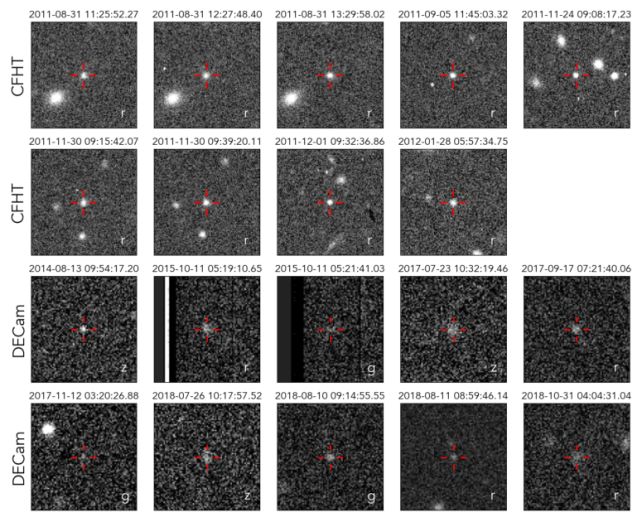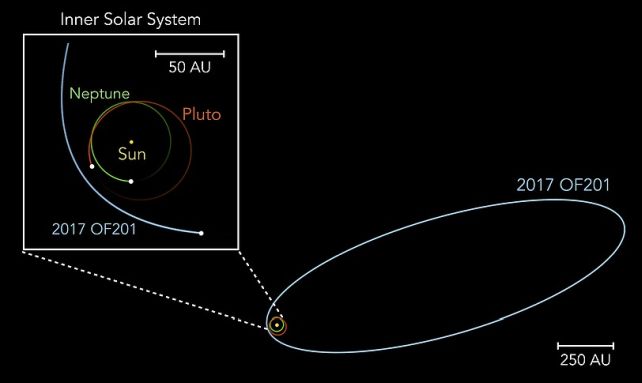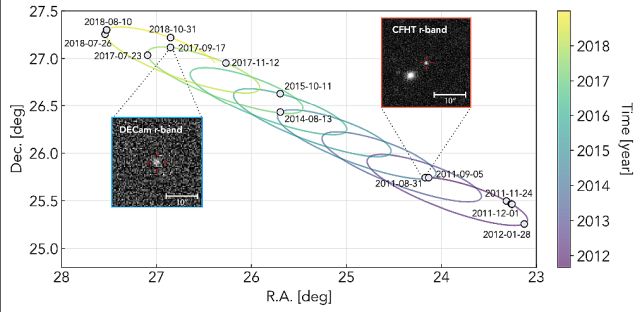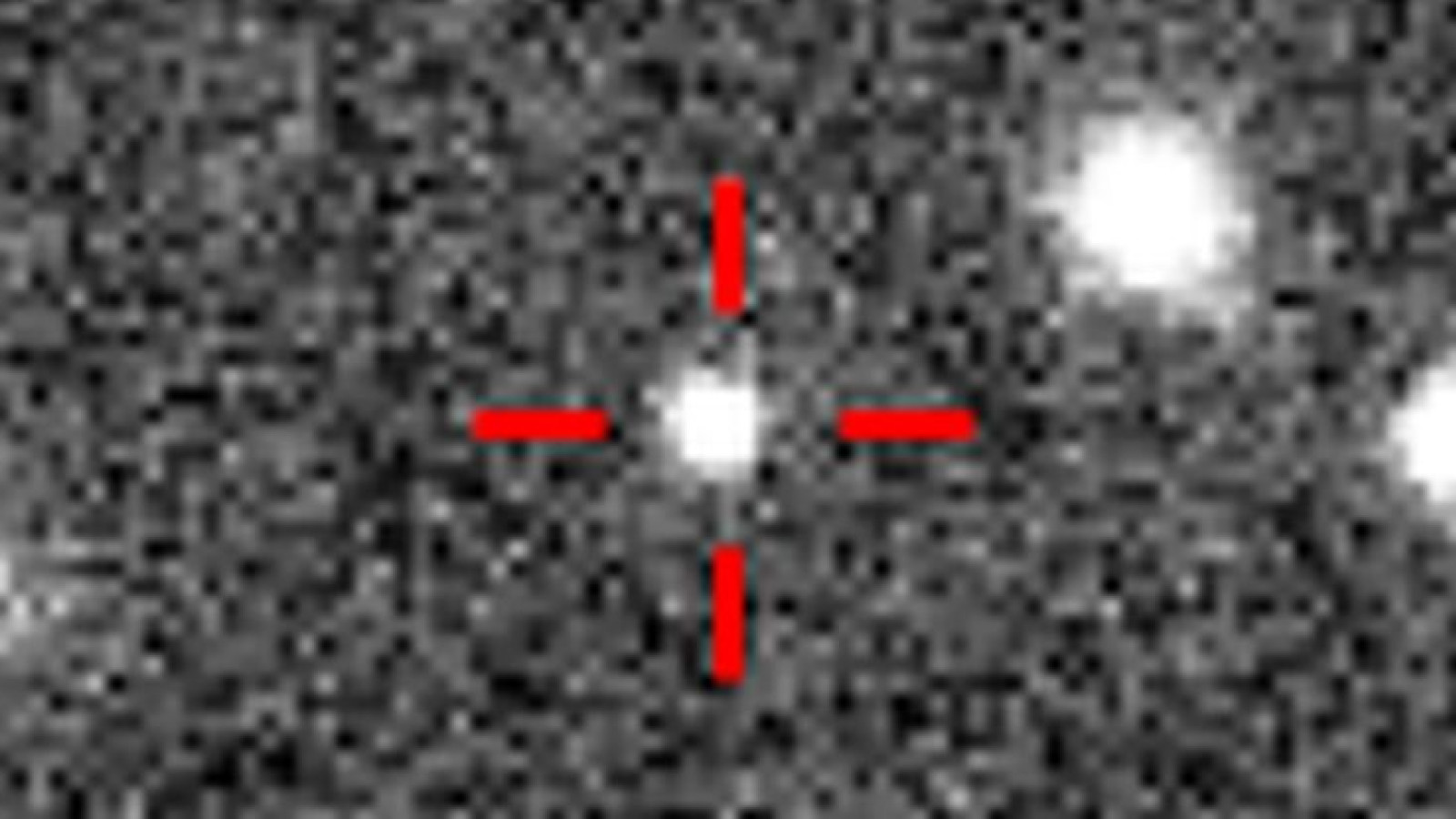5 Minutes
Unveiling the Mysteries of the Outer Solar System
For travelers and adventurers with a thirst for the unknown, the latest cosmic discovery is a true invitation to imagine what lies at the farthest frontiers. Astronomers have recently detected a new distant glittering body on the outermost reaches of the Solar System—an intriguing dwarf planet known as 2017 OF201. This new find lies well beyond Pluto, inspiring dreams of cosmic travel and raising fresh questions about our planetary neighborhood.
What Makes 2017 OF201 Unique?
With an estimated diameter of nearly 700 kilometers (435 miles), 2017 OF201 easily qualifies as a dwarf planet. But what truly piques the curiosity of both skywatchers and scientific explorers is its dramatic orbital path. The most distant part of this orbit—called the aphelion—is farther from the Sun than almost anything we’ve found, stretching more than 1,600 times the distance from the Earth to the Sun. Its closest approach—perihelion—comes to about 44.5 times the Earth-Sun distance, an orbit reminiscent of Pluto’s own celestial voyage.
Charting New Destinations: The Kuiper Belt and Beyond
Astro-enthusiasts and would-be space tourists often dream of what lies beyond Neptune. The region, including the mysterious Kuiper Belt, is a true playground for discovery. Packed with icy dwarf planets and trans-Neptunian objects (TNOs), this realm is a treasure trove waiting to be explored. For stargazers, there’s a sense of embarking on a journey into the unknown—one that could rival the thrill of visiting the world’s most remote terrestrial destinations.
Spotting objects in such distant corners is far from easy. These bodies are minuscule, frozen, and barely reflect any sunlight. Thanks to cutting-edge technologies like the Dark Energy Camera Legacy Survey (DECaLS) and the Canada France Hawaii Telescope (CFHT), astronomers are now able to glimpse deeper into this cosmic wilderness than ever before. The discovery of 2017 OF201, initially captured at over 90 astronomical units away (over double Pluto’s distance), marks a new chapter in space exploration.

Fun Activities for the Inquisitive Soul
- Stargazing in Dark Sky Parks: While a visit to 2017 OF201 isn’t (yet!) in the cards, travelers can enjoy the thrill of celestial observation at some of Earth's best dark sky reserves, gaining a fresh appreciation for outer solar system wonders.
- Planetarium Visits: Modern planetariums bring these distant destinations to life, offering virtual voyages beyond Neptune and tours of the Kuiper Belt.
- Astro-Tourism Adventures: Locations such as Hawaii’s Mauna Kea or Chile’s Atacama Desert provide stunning opportunities to peer into the void with professional-grade telescopes under star-studded skies.
Tips for Star Seekers Planning Their Next Space-Themed Adventure
- Time Your Trip: For optimal stargazing, plan visits during new moon phases and seek high-altitude locations with minimal light pollution.
- Pursue Knowledge: Sign up for guided astronomy tours or lectures, where experts interpret cutting-edge discoveries like 2017 OF201 for travelers of all ages.
- Engage with Local Culture: Many destinations have rich astronomical traditions. For instance, native Hawaiian and Andean cultures tie celestial phenomena to local legends—immerse yourself in these stories for a truly memorable journey.

Scientific Significance—and What It Means for Our Solar System
2017 OF201’s orbit is so unusual that it’s challenging older ideas about the existence of the hypothetical "Planet Nine." Simulations conducted by astronomers show that this small world’s stable orbit argues against the presence of a giant, unseen planet lurking in the far darkness. If Planet Nine were real, 2017 OF201 might have been thrown out of the Solar System by gravity long ago—a cosmic eviction notice that hasn’t happened.
Perhaps most fascinating for intrepid explorers: the existence of 2017 OF201 suggests there could be hundreds more such objects wandering the Kuiper Belt and the inner Oort Cloud. Given the limitations of even our best telescopes, most of these worlds may never be seen from Earth, but their presence fills our Solar System with the promise of uncharted territory.

Travel Advice: Feeding Your Sense of Wonder
- Stay Curious: Just as ancient navigators set sail in search of new worlds, today’s astro-tourists can channel that spirit of discovery by keeping up with space science and seeking out new astronomical events and destinations.
- Explore From Home: Remote stargazing events, live-streamed telescope feeds, and interactive sky mapping apps make it easy to join in the thrill wherever you are.
- Share Your Travels: Whether exploring the night sky or visiting observatories, share your experiences and inspire others to look up and wonder.
The Universe Awaits: Inspiration for Travelers
Although we may not physically journey to 2017 OF201 anytime soon, its discovery sparks imagination and highlights how much of our cosmic backyard remains unexplored. With new advancements in technology and a spirit of curiosity, the boundaries of travel and exploration continue to expand—both on our planet and far beyond.
So, whether you're planning your next astro-tourism trip, contemplating a visit to the world’s premier observatories, or just gazing up from your own backyard, let the discovery of 2017 OF201 inspire your next adventure. The Solar System is vast and full of mysteries—go out and discover it for yourself!


Comments